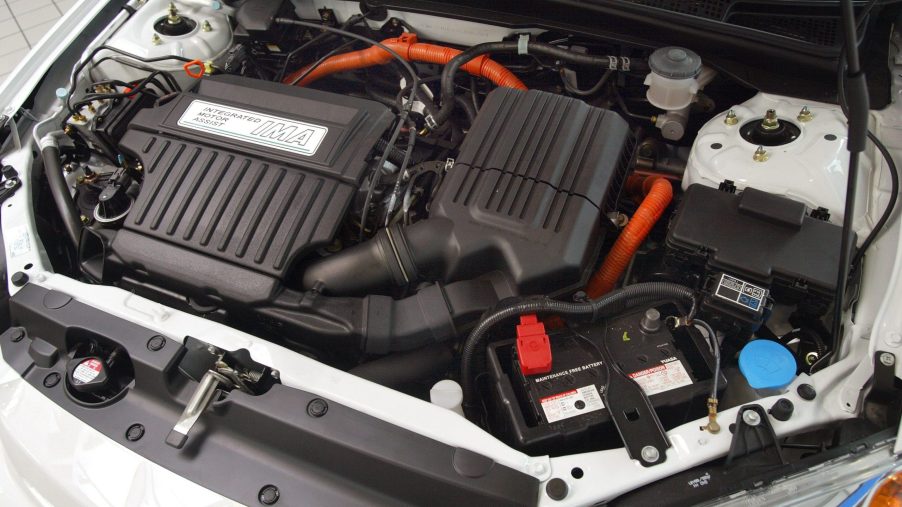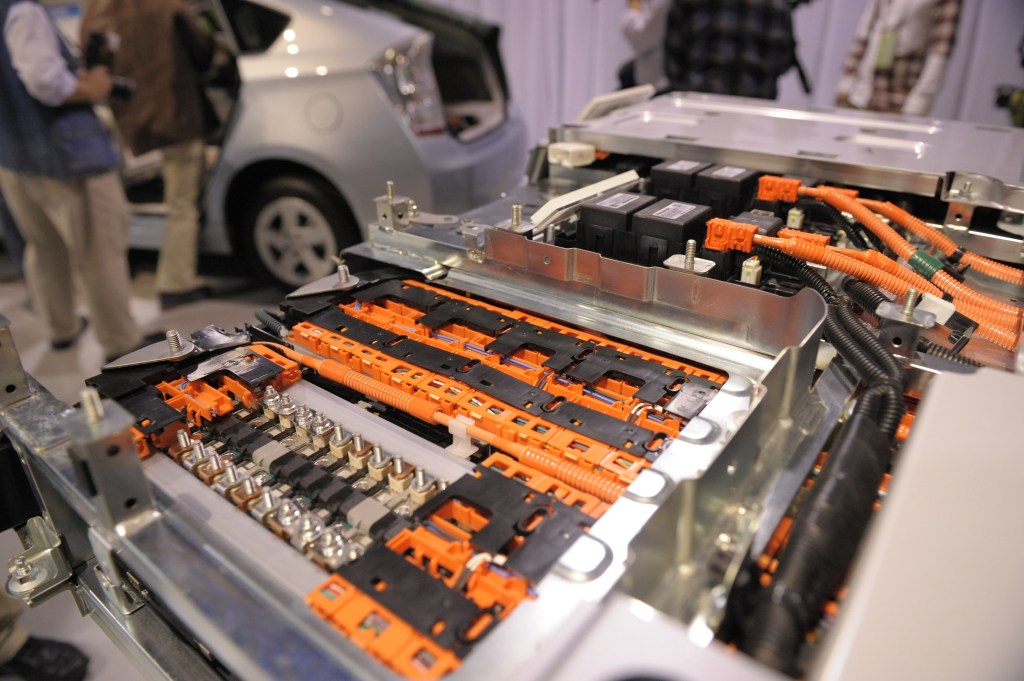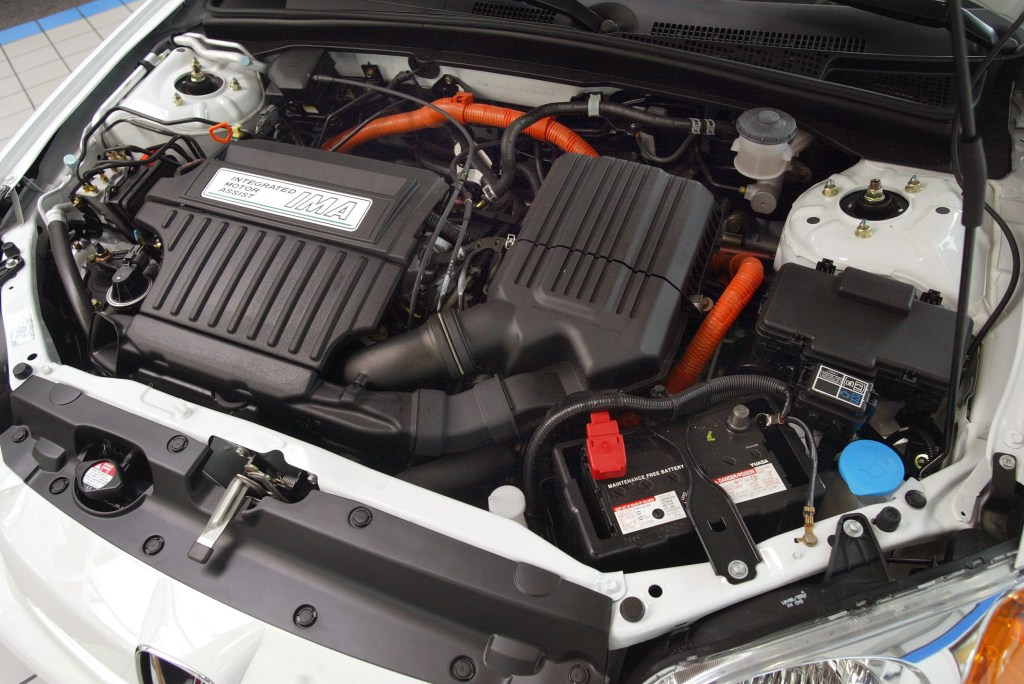
Why Can’t Electric Cars and Hybrids Jump-Start Their Own Batteries?
Usually, discussions about hybrid and electric cars’ batteries revolve around their large lithium-ion packs. However, like internal-combustion cars, hybrids and EVs rely on conventional 12-volt lead-acid batteries, too. And just like an ICE car’s batteries, they can go flat. If that happens, though, you’d think the hybrid or EV could just jump-start the 12-volt battery using their Li-ion pack. But there are several reasons why, for the most part, that’s not the case.
Hybrid and electric car batteries are too different from 12-volt ones to directly jump

Although hybrid and electric cars wouldn’t be feasible without lithium-ion battery chemistry, they can’t abandon 12-volt lead-acid technology completely.
Firstly, it lets them run accessories like the lights and audio system without losing precious range. Secondly, 12-volt electrical systems are a proven, reliable technology. And thirdly, these lead-acid batteries power the contactors and relays that can disconnect the high-voltage pack in case, say, a firefighter needs to cut into the EV to rescue someone. This interconnectivity also explains why an EV with a dead 12-volt battery can’t function and needs to be jump-started.
But while you can jump-start a hybrid or electric car’s 12-volt battery using another car, or vice versa, you typically can’t use the lithium-ion pack. Yes, EVs can top-up their lead-acid batteries using their lithium-ion packs as stand-in alternators courtesy of built-in DC-DC converters. And since hybrids have internal combustion engines, they have actual alternators. However, once the 12-volt battery goes flat, the lithium-ion pack can’t help.
The reason why isn’t because of chemistry differences, but rather electrical ones. Remember those relays I mentioned earlier? Without them, the lithium-ion pack wouldn’t be able to safely charge the 12-volt battery due to their voltage and current output differences. That’s why you absolutely shouldn’t use an electric vehicle to jump-start an ICE car’s 12-volt battery. And since the 12-volt battery in your hybrid or electric car is what powers the onboard safety equipment, if it’s dead, that’s all offline.
In short, theoretically, you could jump-start a 12-volt lead-acid battery with the lithium-ion pack from a hybrid or EV. But it would require a bunch of additional safety equipment or an electrical system re-think.
A handful of hybrid cars can jump their own batteries, though
On that note, at least one car company did re-think its electrical systems precisely to allow for this self-jump starting.
When Hyundai introduced the hybrid Ioniq in 2017, it was the first production car without a 12-volt lead-acid battery. Rather than use one, Hyundai carved out some space in the lithium-ion pack’s housing for a secondary, smaller lithium-ion starter battery. Then, it basically hooked the two together with permanent jumper cables, Car and Driver explains.
The Ioniq still had separate 12-volt and 240-volt circuits. However, if the starter battery ever died, the owner just had to press a ’12-volt Battery Reset’ switch on the dashboard. This lets the main battery trickle enough current into the starter one to let the engine fire. After that, the alternator would recharge the starter battery as normal.
Although the Hyundai Ioniq was the first hybrid car with this feature, it wasn’t the only one. The mechanically-related Kia Niro Hybrid has the same Battery Reset button, as does the Sonata Hybrid. And the now-discontinued Ioniq Electric also had a similar switch. However, outside of Hyundai and Kia, it seems few if any brands offer this kind of feature.
What should you do if your electrified vehicle’s 12-volt battery dies?

Understandably, that’s not the best news to hear when your hybrid car is stuck because of a dead battery. Fortunately, jump-starting a hybrid is no different than jumping a pure-ICE car.
If you have jumper cables, hook one positive (red) clamp to the working car’s positive terminal and the other to the dead car’s positive terminal. Then, hook one negative (black) clamp to the working car’s negative terminal and the other to an unpainted metal surface on the dead car. Next, just start the working car and wait for a few minutes. Then, disconnect the cables in the opposite order they were attached and drive the formerly-dead car for a while. Or, if you don’t want to rely on the kindness of strangers, invest in a portable jump starter.
The procedure for jump-starting an electric car’s dead 12-volt battery is virtually the same. However, instead of hooking the negative clamp to an unpainted metal surface, you attach it to the dead EV’s negative grounding point, KBB explains.
Follow more updates from MotorBiscuit on our Facebook page.


